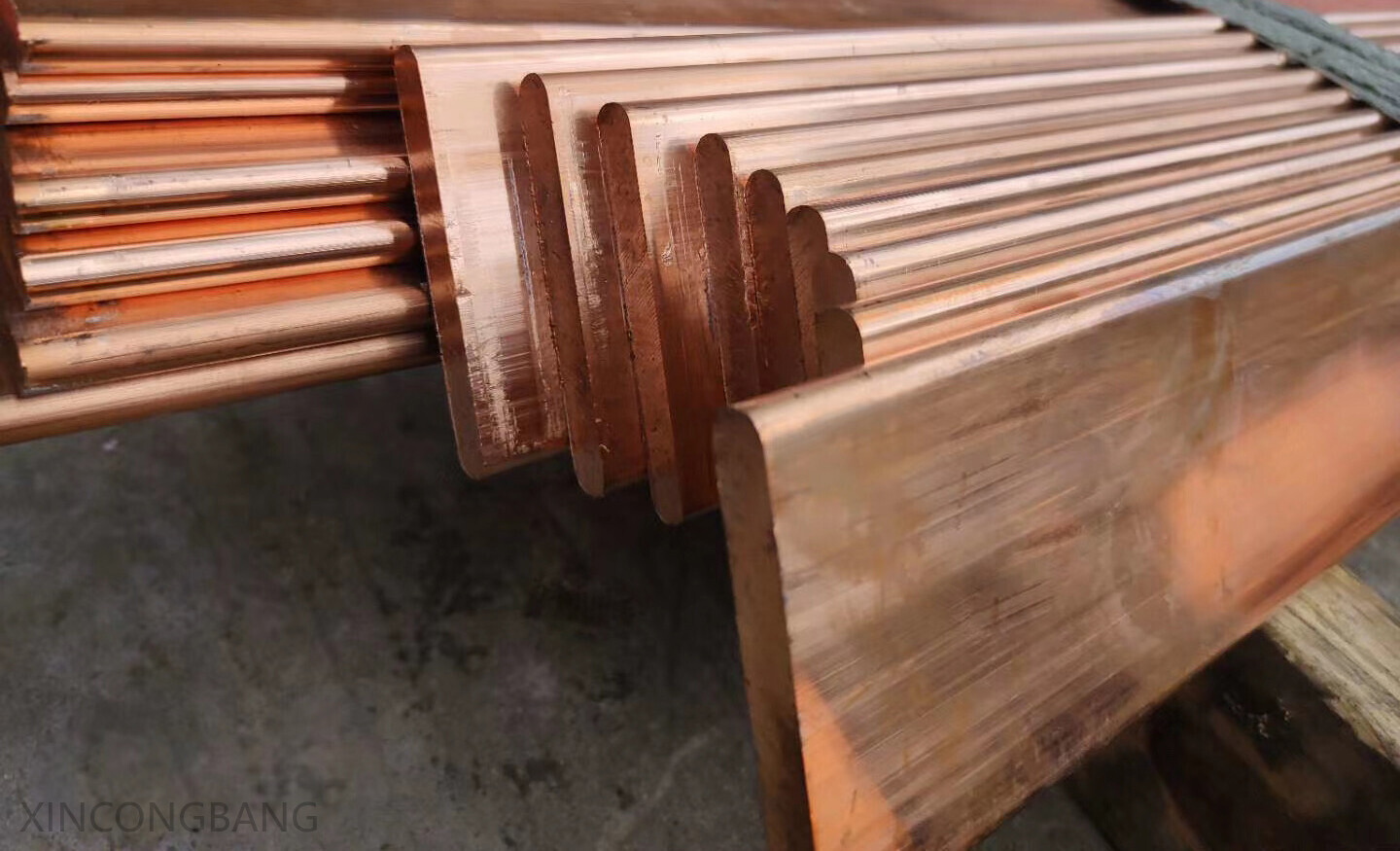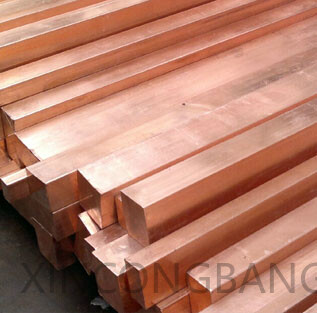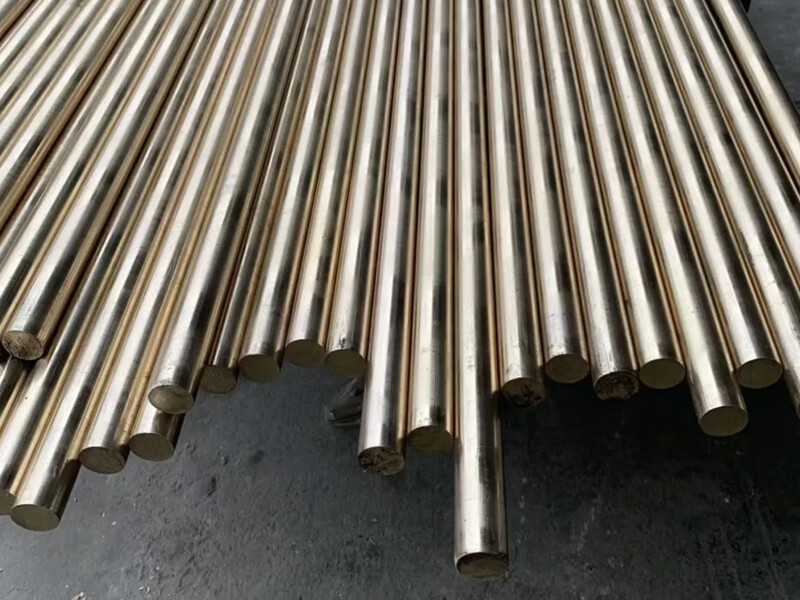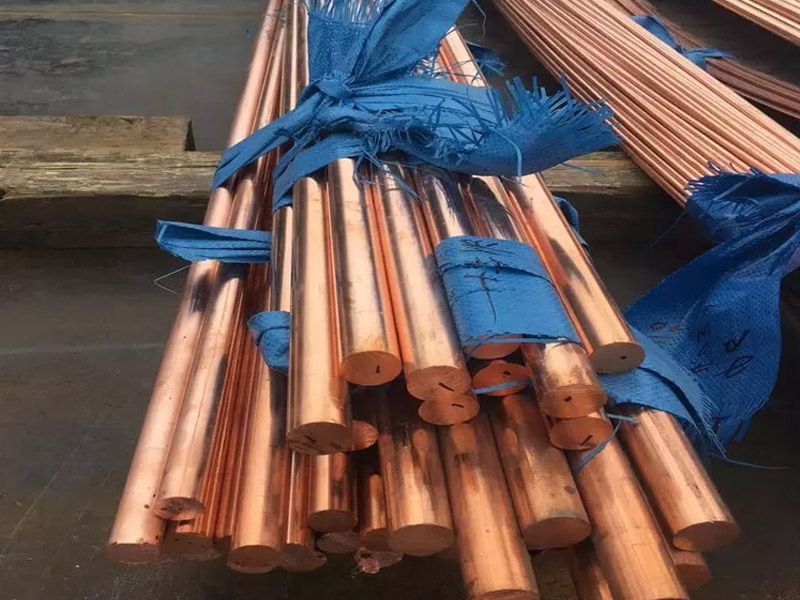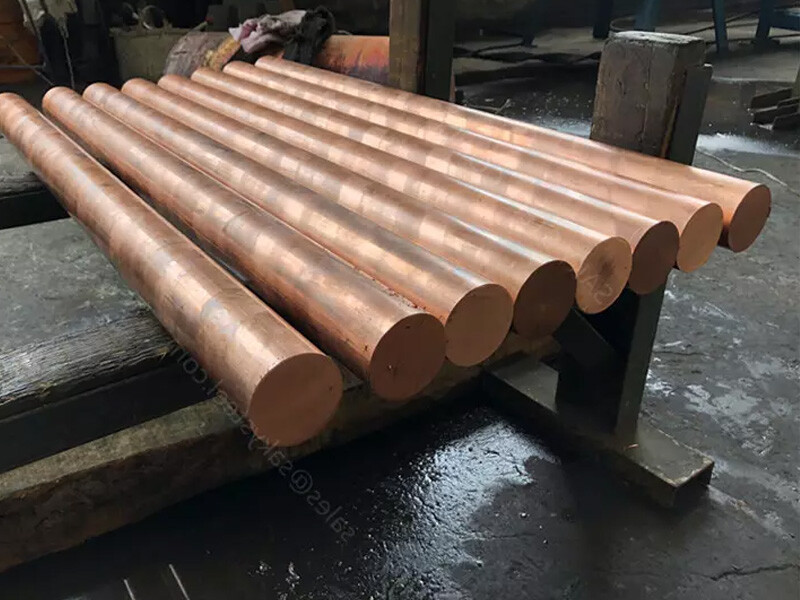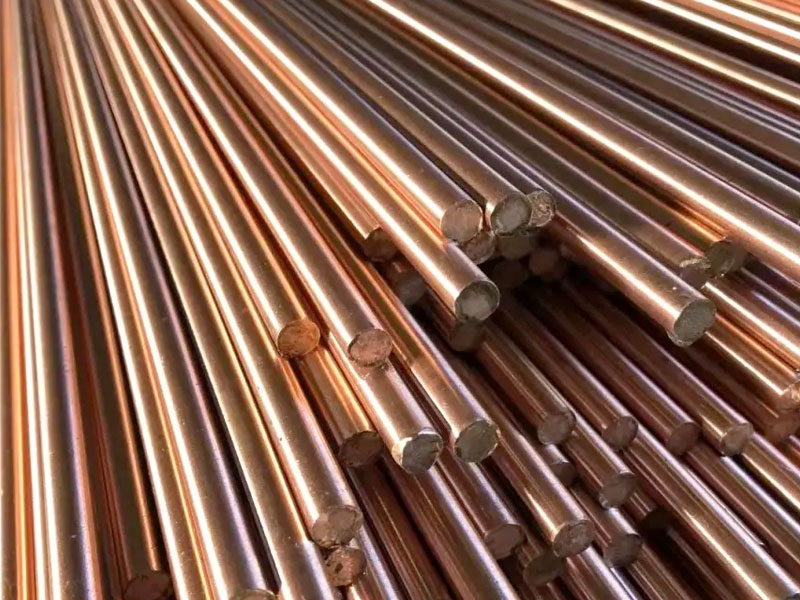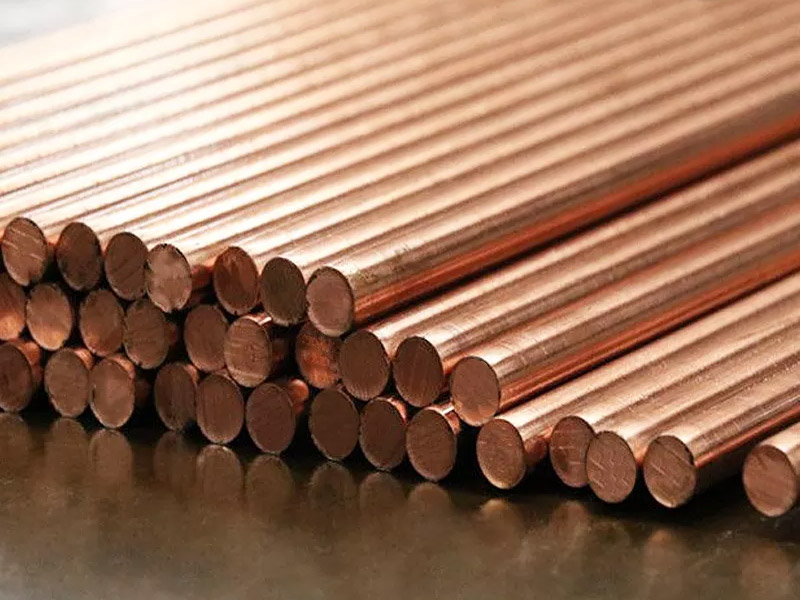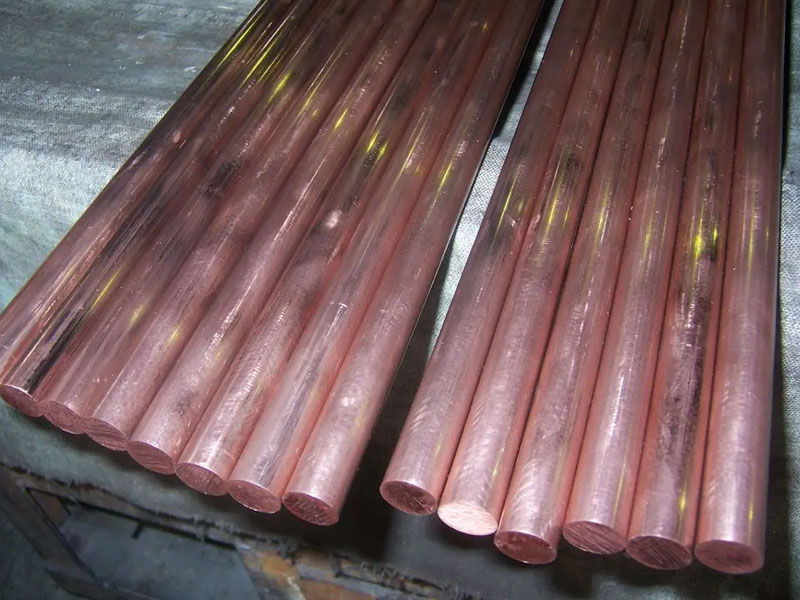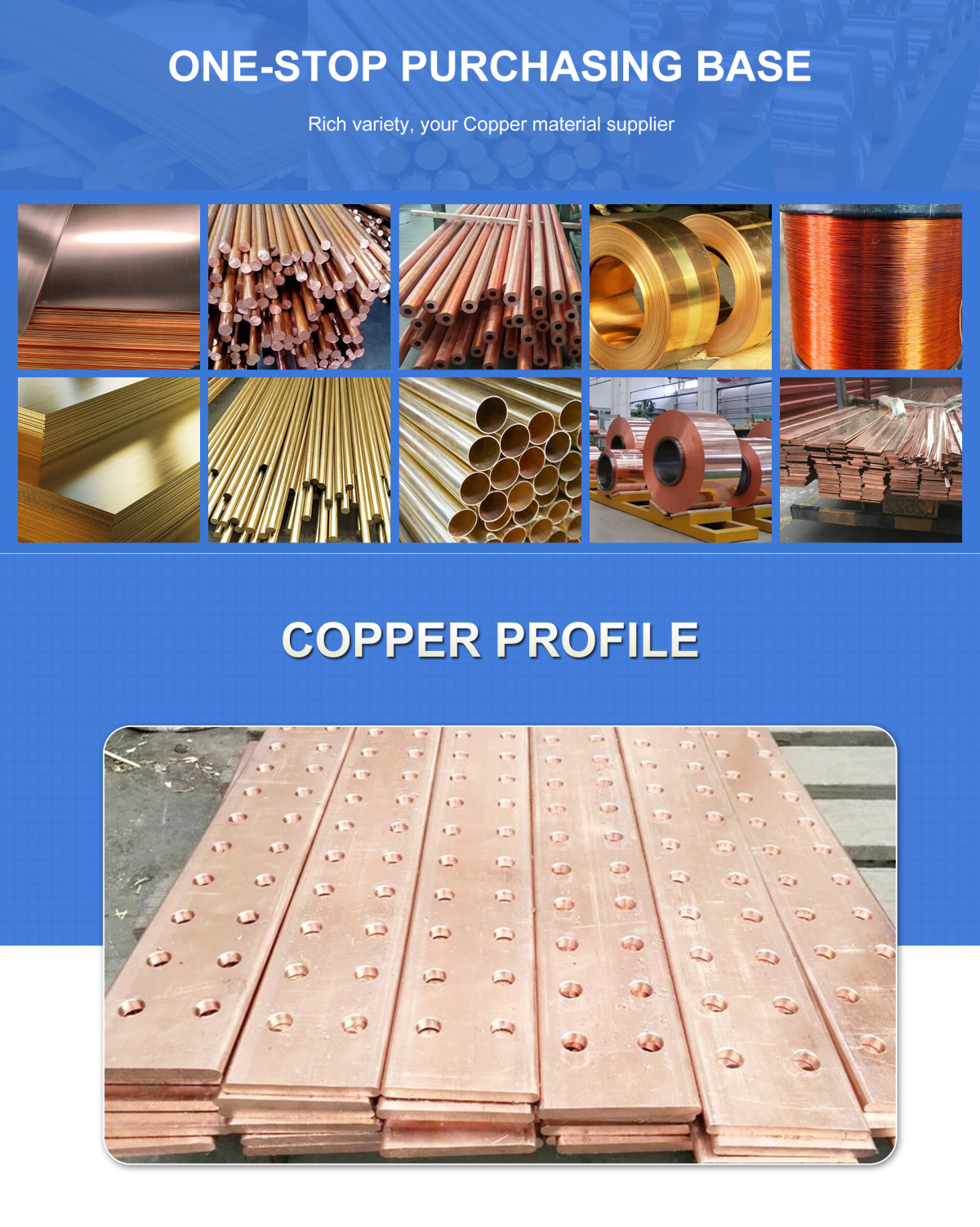
The size range and international standards of C12000 copper rods are as follows:
Size range
Diameter range:
According to ASTM B187, the standard diameter range of C12000 copper rods is 3mm to 800mm, suitable for various shapes such as round rods, square rods, rectangular rods, etc.
The diameter range of C12000 steel rods (forgings, bars, etc.) provided by Chaozhou Metal is 6-500mm, and the length can be customized to 0.5-30 meters.
The diameter range of copper rods for mineral insulated cables is smaller, 3-80mm, and is designed for cable conductors.
Length options:
The conventional length is 5.8 meters and 6 meters, and longer sizes (such as 30 meters) can also be customized according to needs.
The thickness range of the plate is 0.5-80mm, and the width can reach 3 meters.
Other shape specifications:
The size of square rods is 4×4mm to 100×100mm, and the rectangular rods are 33×30mm to 295×1066mm.
The outer diameter of the copper tube can reach 914mm, and the wall thickness ranges from 0.2-120mm, which is suitable for pipelines and heat exchangers.
International Standards
Core Standards:
ASTM Standards: C12000 mainly follows ASTM B187 (copper bars, rods and profiles) and ASTM B183 (extruded copper rods).
International Comparison:
Japanese Standard (JIS): The corresponding grade is C1201.
German Standard (DIN): The corresponding grade is SW-Cu.
Main ingredients:
Copper (Cu): content ≥99.90% (with other elements the sum does not exceed 0.1%).
Phosphorus (P): content ranges from 0.004% to 0.012% (some standards such as ASTM B152/B152M-2019 stipulate 0.004% to 0.035%). The role of phosphorus is deoxidation, improving weldability and corrosion resistance.
Impurity elements (extremely low content, usually not exceeding the following limits):
Lead (Pb), iron (Fe), nickel (Ni), antimony (Sb), arsenic (As), bismuth (Bi), sulfur (S), etc.: total impurity content ≤0.1%, and the content of each element alone is usually ≤0.02%.
Oxygen (O): controlled by phosphorus deoxidation process, the residual content is extremely low.
Mechanical properties:
Tensile strength (σb): ≥295 MPa (room temperature tensile properties of the strip)
Elongation (δ10): ≥3% (reflects the plasticity of the material)
Hardness:
Annealed state: about 55~80 HV (Vickers hardness)
Cold working state: up to 80~100 HV
Other properties:
Good cold bending and welding properties, suitable for pipeline forming
No tendency to "hydrogen disease", can be used in reducing atmosphere
Physical properties:
Electrical conductivity and thermal conductivity: high, but the addition of phosphorus makes it slightly lower than pure copper
Corrosion resistance: good performance in fresh water, sea water and general atmospheric environment, but susceptible to nitric acid and sulfur-containing media
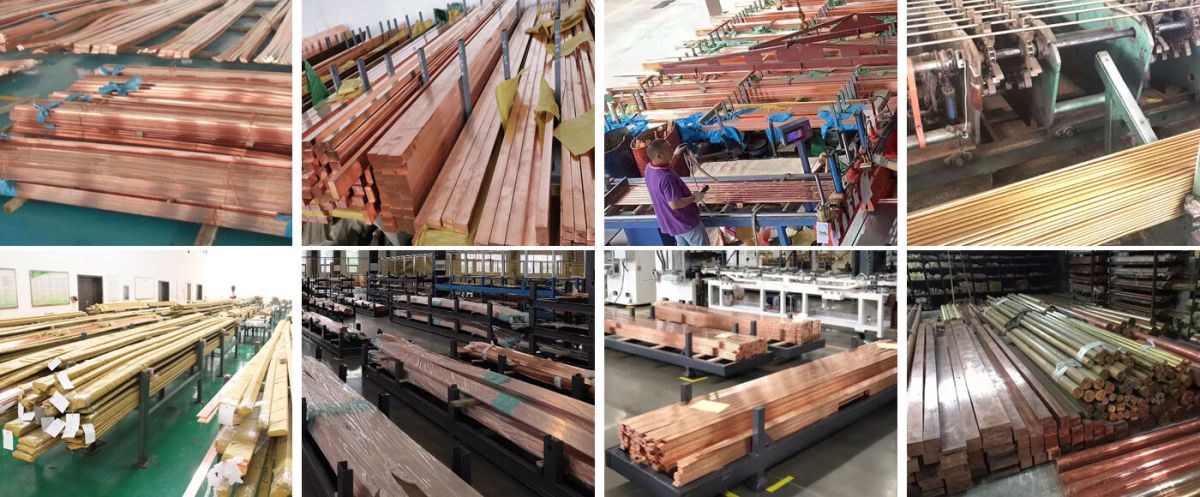
C12000 copper rod is a low-phosphorus deoxidized copper material, and its production process and product advantages are as follows:
1. Production process
Raw material processing and smelting
The raw materials are waste copper, electrolytic copper, etc., which are melted at a high temperature of 1100℃ by an industrial frequency furnace or a medium frequency furnace, and a slag remover (such as quartz flux) is added to remove impurities.
Deoxidation treatment is the core step. By adding phosphorus elements (such as P≤0.004%) for deoxidation, the fluidity and organizational density of the copper liquid are improved, and the oxygen content is reduced.
Continuous casting and molding
Horizontal continuous casting technology or submerged liquid transfer multi-head multi-stream continuous casting is used to achieve efficient and continuous production. For example, Ningbo Jintian Copper's horizontal continuous casting technology can produce 64 copper rods of different specifications at the same time, with an efficiency increase of more than 10 times compared with traditional processes.
After the molten copper liquid is treated in an insulation furnace, it is formed by a traction machine or an extruder. Hailiang Co., Ltd.'s 38MN reverse extruder can cover the production of multiple brands and improve the density and surface smoothness of the product.
Subsequent processing
Includes processes such as drawing, stretching, pickling, and annealing. For example, mechanical properties are improved by cold rolling or cold stretching, and annealing eliminates internal stress and controls grain size (20-40μm) to ensure material stability.
Scraps and slag are recycled, such as cutting waste is returned to the furnace for remelting, and slag is partially reused after screening to reduce resource waste.
2. Product advantages
Excellent physical properties
High electrical conductivity and thermal conductivity: C12000 copper purity ≥99.9%, electrical conductivity ≥100% IACS, excellent thermal conductivity, suitable for electrical components and heat exchange equipment.
Corrosion resistance: Low-phosphorus deoxidation process reduces grain boundary oxidation and enhances corrosion resistance in reducing atmospheres and extreme environments, suitable for ships, oil pipelines and other scenes.
Outstanding processing performance
Good cold bending and welding performance, can be easily processed into complex shapes such as pipes and wires, meeting precision manufacturing needs.
After annealing, it has excellent ductility (such as tensile strength ≥ 200MPa, elongation ≥ 35%), suitable for cold pressing.
Environmental protection and safety characteristics
Antibacterial property: Naturally inhibits the growth of bacteria and fungi, suitable for medical facilities and drinking water systems.
Recyclability: The material can be fully recycled, reducing the carbon footprint, in line with the environmental protection trend.
Wide application
Covering electrical, HVAC, bathroom valves, industrial machinery and other fields. For example, high-density copper rods are used for precision valve manufacturing, and thin-walled copper tubes are used in refrigeration systems.
Q1:Do you provide samples? Is it free or extra?
A1:Yes, we can provide samples free of charge and the customer will pay the freight.
Q2:What if I don't have export experience ?
A2:We have reliable forwarder agent which can ship items to you by sea/air/Express to your doorstep. Any way, we will help you choose the most suitable shipping service.
Q3:How long is your lead time?
A3:If it is in stock, it is usually 5-10 days. Or, if there is no inventory, 15 days, depending on the quantity.
Q4:What are your terms of payment?
A4:30% T/T deposit in advance, 70% T/T balance within 5 days after B/L copy, 100%.Irrevocable L/C at sight, 100% Irrevocable L/C after receive B/L 30-120 days, O/A.
Q5:How is your technical support?
A5:We provide lifetime online support through Whatsapp/ Skype/ Wechat/ Email. Any problem after delivery, we will offer you call anytime.
Welcome To Your Inquiry
What can we help you?
RELATED PRODUCTS




